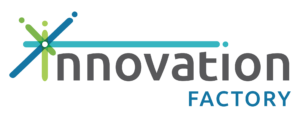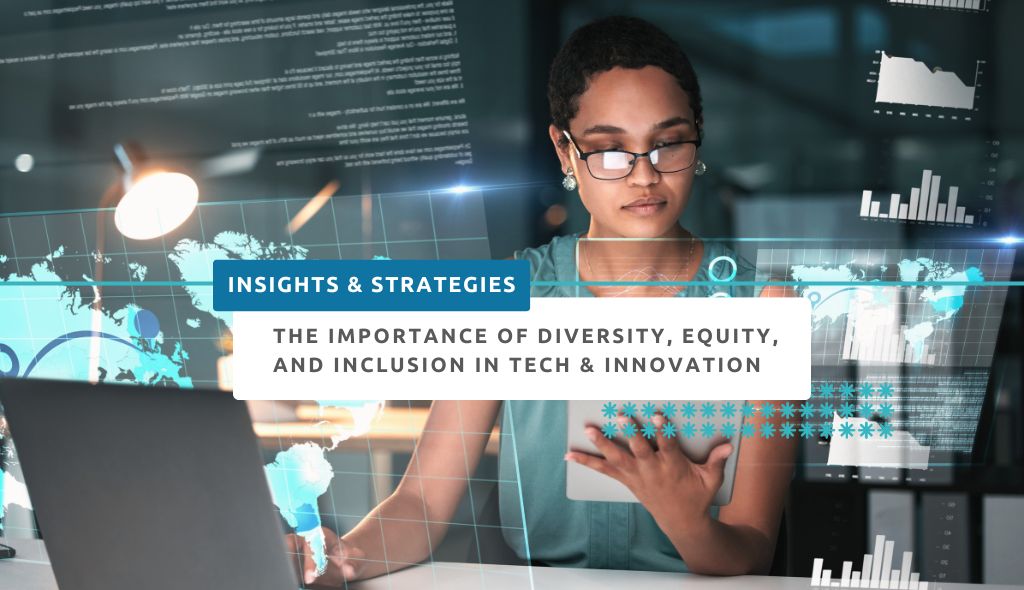Why are diversity, equity and inclusion so important in technology and innovation anyway? And what can companies do to not only foster but maintain a real sense of belonging for everyone? Find out below.
Diversity, Equity and Inclusion (DEI) have become increasingly important topics in the technology and innovation industries. These concepts refer to creating a workplace that is diverse in terms of gender, race, ethnicity, sexual orientation, age, ability, and other characteristics. Equity involves ensuring that everyone has equal access to resources, opportunities, and support to succeed. Inclusion focuses on creating a sense of belonging and making sure that everyone’s perspectives and contributions are valued.
DEI is important in technology and innovation because these industries have a significant impact on society, and they need to represent and serve a diverse population. A lack of diversity can lead to products and services that are biased or not inclusive, which can ultimately harm marginalized groups. It can also result in missed opportunities for innovation and growth.
Despite the growing recognition of DEI’s importance, the technology and innovation industries still have a long way to go. The following sections will explore the current state of DEI in these industries and the strategies for achieving and maintaining a diverse and inclusive workplace.
The Benefits of DEI in Technology and Innovation
The benefits of DEI in technology and innovation continue to be recognized across the industry. Here are some of the most important:
- Improved decision-making: A diverse group of people brings diverse perspectives, experiences, and knowledge to the table. When people with different backgrounds and viewpoints collaborate, they can identify blind spots and challenge assumptions, leading to better decision-making
- Increased creativity and innovation: Diversity can lead to increased creativity and innovation because people with different experiences and perspectives can generate new ideas and approaches that a homogenous group might not have considered. A diverse workforce can also help companies identify unmet needs and create solutions that serve a broader range of customers.
- Expanded market opportunities: A diverse workforce can help companies better understand and serve a diverse customer base. For example, a diverse marketing team can create campaigns that resonate with different cultures and languages, expanding the company’s market reach.
- Better talent retention and recruitment: A workplace that values diversity, equity, and inclusion can attract and retain top talent. When people feel valued and included, they are more likely to stay with a company long-term. Additionally, companies that prioritize DEI are more likely to attract a diverse pool of candidates for open positions.
Current Challenges in Achieving DEI in Technology and Innovation
Despite the potential benefits of DEI, the technology and innovation industries face several challenges in achieving it. Here are some of the most common ones:
- Lack of representation: Many marginalized groups, including women and people of color, are underrepresented in technology and innovation industries. This can make it difficult for these groups to feel welcome or included, and it can also limit the perspectives and experiences that are represented in these industries.
- Unconscious biases: Unconscious biases are attitudes or beliefs that people hold without being aware of them. These biases can lead to unfair or discriminatory practices in hiring, promotions, and other workplace decisions. Addressing unconscious biases is essential to creating a more equitable and inclusive workplace.
- Unequal access to resources and opportunities: People from marginalized groups may not have the same access to resources and opportunities as their more privileged counterparts. For example, people from low-income backgrounds may not have access to the same educational opportunities or networks as people from wealthier backgrounds. Addressing these inequalities is essential to creating a more equitable workplace.
- Cultural barriers: Technology and innovation industries often have a dominant culture that can be difficult for people from different backgrounds to navigate. This can include jargon, work styles, and expectations that are not inclusive of diverse perspectives and experiences.
Addressing these challenges requires a concerted effort from companies and individuals in the technology and innovation industries. By recognizing and addressing these barriers, we can create a more diverse, equitable, and inclusive workplace.
Strategies for Achieving DEI in Technology and Innovation
Achieving DEI in the technology and innovation industries requires a multifaceted approach that addresses the root causes of inequality and discrimination. Here are some strategies for achieving DEI in these industries:
- Implementing inclusive hiring practices: Inclusive hiring practices are essential for achieving DEI in the technology and innovation industries. This can include strategies such as using diverse recruiting sources, adopting blind resume reviews, and creating diverse interview panels. Additionally, companies should focus on reducing unconscious bias in hiring decisions.
- Fostering a culture of inclusion: Companies should create a culture of inclusion that values and celebrates diversity. This can include promoting diversity and inclusion in company messaging, creating safe spaces for employees to share their experiences and perspectives, and promoting inclusive leadership styles.
- Providing equal access to resources and opportunities: To achieve DEI, companies must provide equal access to resources and opportunities for all employees. This can include investing in employee development programs, offering flexible work arrangements, and ensuring that all employees have access to the same tools and resources.
- Investing in DEI training and education: Companies should invest in DEI training and education for all employees. This can include workshops, training programs, and online resources that help employees understand their biases, promote empathy and understanding, and develop skills to work effectively in diverse teams.
- Sign up for the 50-30 Challenge: Find out more about how the 50 – 30 Challenge will support diversity actions already taking place in many Canadian organizations and encourage other Canadian organizations to adopt practices to improve equity.
Achieving DEI in the technology and innovation industries requires a strategic approach that addresses the root causes of inequality and discrimination. By implementing inclusive hiring practices, fostering a culture of inclusion, providing equal access to resources and opportunities, and investing in DEI training and education, and considering enrolment in the 50-30 Challenge, companies can foster a real sense of belonging for everyone. Read on to find out how companies can maintain that dynamic long into the future.
Highlights from the 2022 Diversity in Tech Dashboard
- Representation of women increased 2.6% from 33.2% to 35.8%.
- Representation of Indigenous peoples increased from 0.7% to 1.4%
- Representation of people identifying as 2SLGBTQIA+ increased from 8.3% to 9.8%
- Representation of people with disabilities increased from 2.9% to 3.5%.
- Representation of people of colour remained static at 40.6%.
Data courtesy of TAP Network
Best Practices for Maintaining DEI in Technology and Innovation
Achieving DEI is not a one-time event but an ongoing process that requires ongoing effort and commitment. Here are some best practices for maintaining DEI in the technology and innovation industries:
- Regular assessment and evaluation of DEI efforts: Companies should regularly assess and evaluate their DEI efforts to ensure that they are making progress towards their goals. This can include analyzing workforce demographics, conducting employee surveys, and reviewing policies and practices.
- Building and maintaining diverse networks and partnerships: Companies can build and maintain diverse networks and partnerships to increase their access to diverse talent and perspectives. This can include partnering with organizations that serve marginalized communities, attending diversity job fairs, and engaging with diverse communities through social media.
- Supporting employee-led DEI initiatives: Companies should support and empower their employees to lead DEI initiatives. This can include providing resources and support for employee-led groups, such as diversity and inclusion committees, and recognizing and rewarding employees who contribute to DEI efforts.
- Holding leadership accountable for DEI outcomes: Companies should hold their leadership accountable for DEI outcomes by setting DEI goals and metrics, providing regular progress reports to the board of directors and stakeholders, and tying executive compensation to DEI outcomes.
Considering the above points, maintaining DEI in the technology and innovation industries requires ongoing effort and commitment. Regular assessment and evaluation, building and maintaining diverse networks and partnerships, supporting employee-led DEI initiatives, and holding leadership accountable are all essential practices for maintaining DEI in these industries.
The IF Takeaway
There’s no doubt that Diversity, Equity, and Inclusion (DEI) are critical components of creating a successful and sustainable technology and innovation industry. The benefits of DEI are vast, including improved decision-making, increased creativity and innovation, expanded market opportunities, and better talent retention and recruitment. However, there are still many challenges to achieving DEI in the industry, including lack of representation, unconscious biases, unequal access to resources and opportunities, and cultural barriers.
To achieve DEI, companies must adopt best practices such as regular assessment and evaluation, building and maintaining diverse networks and partnerships, supporting employee-led DEI initiatives, and holding leadership accountable. Additionally, strategies such as implementing inclusive hiring practices, fostering a culture of inclusion, providing equal access to resources and opportunities, and investing in DEI training and education are essential.
It’s time for individuals and organizations to prioritize DEI efforts in the technology and innovation industry. Each person can play a role in promoting DEI by recognizing their biases, advocating for diversity and inclusion, and supporting underrepresented groups. For organizations, it is essential to prioritize DEI as a core value and integrate it into all aspects of the business.
When you look at the bigger picture, achieving DEI in the technology and innovation industry is a journey that requires ongoing commitment, effort, and education. Exploring and implementing these practices will create a more diverse, equitable, and inclusive tech industry that benefits everyone.






